‘Pamana’: Filipino masters’ legacy to the art world
It’s not every day that we get to see so many Filipino masters (whose imprint on the art world over the decades will be hard to erase) in one room, let alone in one exhibit.
But here they are—all nine of them—in a happy huddle one balmy afternoon at the Drybrush Gallery, SM MOA Square.
“We were lucky they trusted us in putting up this special exhibit,” says Jojo Liaoo of the five-year-old Drybrush Gallery. “They’re all National Artist nominees who have reached a certain age (70 years old and up) and have already made it, so what’s their next step?”
Jojo elaborates, “This exhibit is not just a celebration of how exceptional these old masters are but also what they can share with the next generation of artists—like passing the torch on to the youth.”
Meet Cory’s teacher
Amid the crowd, in this tony but cozy gallery, we meet Fernando Sena, known as the Father of the Philippine Art Workshop. And yes, we also know him as the art teacher of the late President Cory Aquino.
“I taught Cory’s group who included Justice Conchita Carpio Morales and Lilian de Lima, niece of Leila de Lima,” Sena relates. “I was supposed to teach Cory at her home, but she was too busy, being president at that time. Magaling sya (she was good), she found the time to paint even if she was very busy and she showed a lot of interest. Her works, like her flowers, were colorful.”
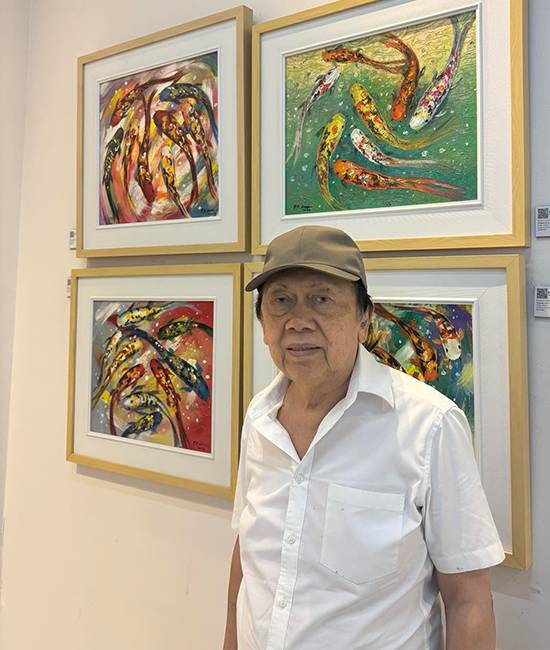
Perhaps for Cory, Sena adds, painting was a form of relaxation, a stress reliever of sorts. “In painting, there’s no unemployment, no retirement. When she was no longer president, she could always paint.”
Sena, who looks as agile as the koi fish depicted in his latest works, declares, “At my age (turning 77 on March 30), I have no diabetes, no rheuma, no heart disease because I move a lot. My only two vices are I paint and I teach.”
A visual feast is his painting showing a hearty serving of fish and pan de sal (like the biblical loaves of bread). “The pan de sal—mine is natural and crumpled—s our universal food which you can find everywhere, from the lowly barrios to five-star hotels. It’s the great equalizer.”
Angono: Home of artists
Beside Sena’s koi are Nemi Miranda’s bustling rural scenes of a cherished past. Bringing a refreshing whiff of the Agono countryside to the concrete jungle, Miranda has helped Angono develop as an artist community. Best known as the Art Capital of the Philippines, Angono has produced two National Artists: Botong Francisco for Visual Arts and Lucio San Pedro for Music.
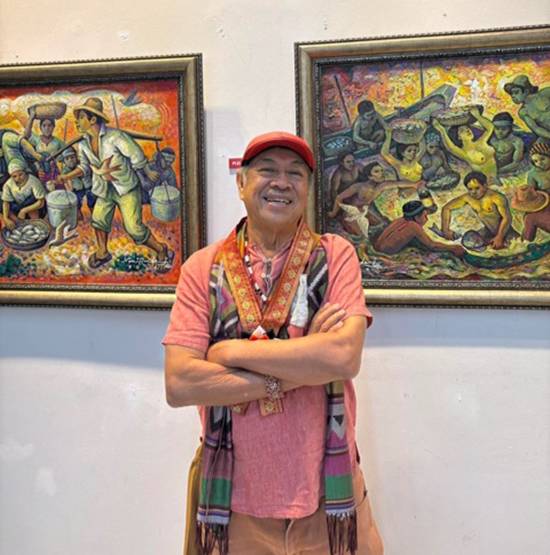
“Today, if you go to Angono, you will see a jungle of sculptures,” says the proud Angono native who is also a sculptor whose works can be found across the breadth of the country. “Angono is a gallery in itself. We also have a school to train the next generation of artists like my own children.”
With the 50-year-old Angono Ateliers Association at the helm, art, indeed, is alive and bristling in Angono.
“You can take the boy out of the country but not the country (or its heritage) out of the boy” is an old adage that could apply to Juno Galang who went to Honolulu in search of the proverbial greener pastures. But home is where his art is—and his love of country, its customs and traditions, remains undiminished by time and distance.
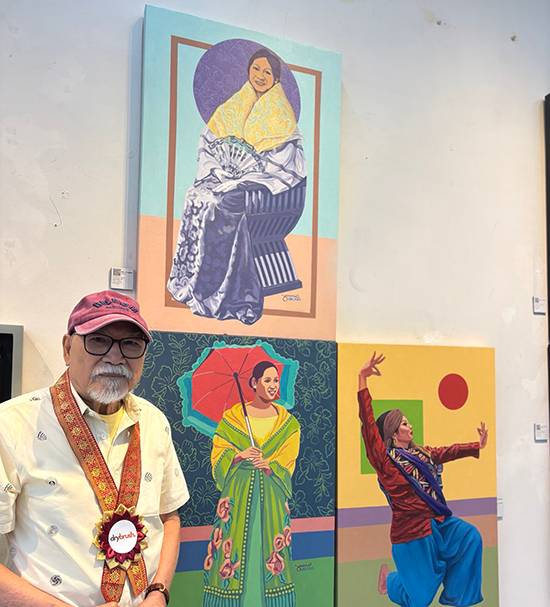
“My pamana (legacy) is the rich and colorful culture of the South, like the tribal dances, that I want the youth of the land to remember and never to forget,” Galang declares. “Long forgotten is the Maria Clara dress, the fashion statement of the Spanish colonial era,” as shown in one of his paintings.
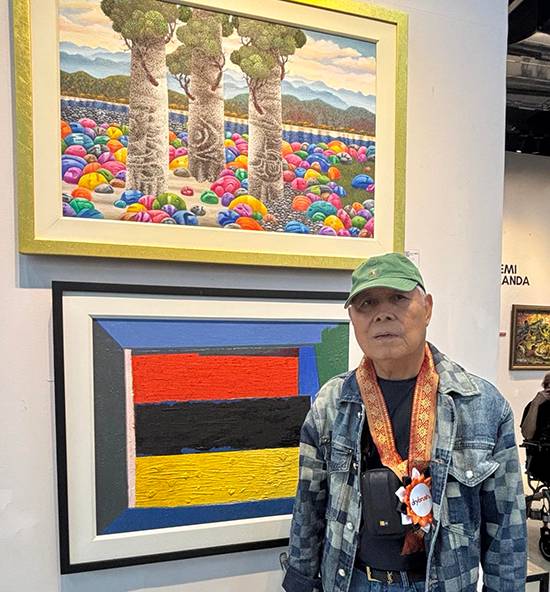
Prudencio Lamarroza’s art flows, with a vibrant splash of colors, like his series of the Amburayan River in Ilocos Sur. A Fine Arts graduate of the University of Santo Tomas, the Ilocano artist has inspired many an art student with his surreal paintings.
Meet the ‘tutti frutti’ artists
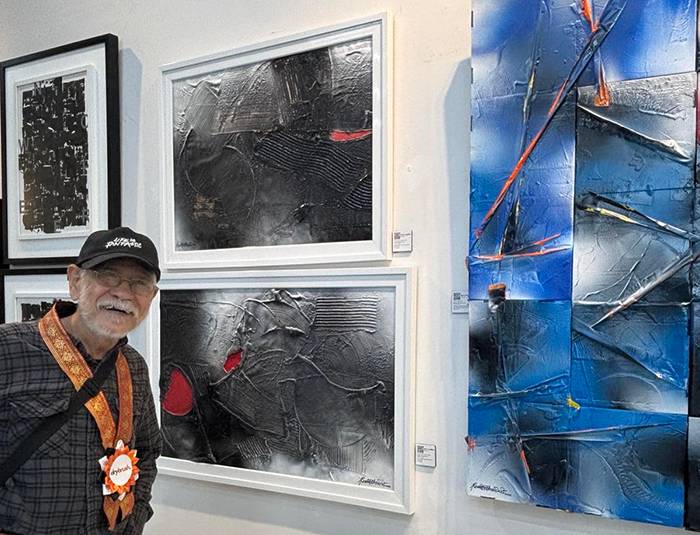
Rodolfo Samonte, also a UST Fine Arts graduate, has been painting all his life. A printmaker (“I was probably the only one at the time”), he was a proud member of the Taza de Oro Group which included National Artists HR Ocampo and Cesar Legaspi. The group, whom Bobby Chabet, the Father of Conceptual Art, called the “Tutti Frutti Artists,” shared a consummate passion for art and a voracious appetite for ice cream.
Romeo Gutierrez’s paintings have evolved, from the non-objective to the more figurative. “Something people will understand,” he explains. “It just comes naturally, I just follow my emotions now.”
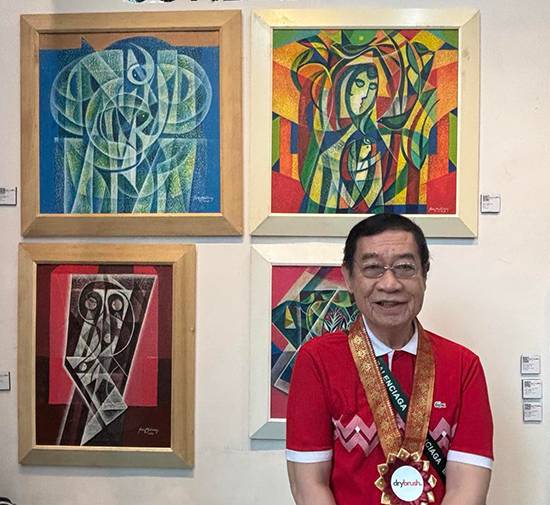
His works bear that unmistakable Filipino touch. “Never lose your Filipino identity,” Gutierrez, who taught for 30 years at the College of Holy Spirit Fine Arts Department, tells young artists. “Philippine art can compare and compete with the rest of the world.”
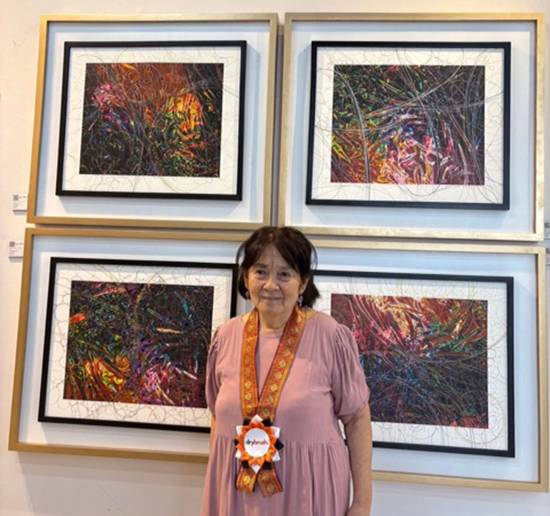
The only lady in this male-dominated special exhibit is Ma. Luisa “Turs” Simsuangco, a Melbourne-based artist, designer, photographer and poet rolled into one gracious package. “I love beautiful things, that’s why I studied art at UST,” she asserts. “The legacy I will leave behind is my grandchildren’s love for art; all of them are creative, they know how to sketch and draw at their young age.”
Beside Turs is her ever-supportive husband, Caesar Sario, a well-known painter/sculptor and the man who made this exhibit possible. Sario’s down-to-earth works (like his “Sacred Earth”) speak of his enduring love affair with art.
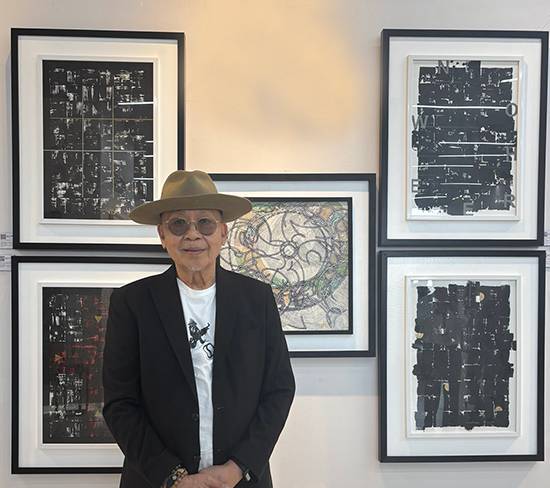
Finally, we meet Nelson Castillo who says with an impish smile, “I’m sweet 80.”
He recalls, “When I was starting, I was a struggling artist who couldn’t even sell a painting. The term ‘starving artist’ is really true. I wasn’t just a starving artist back then, I also had five kids to feed, which was why I first went into advertising where the money was.”
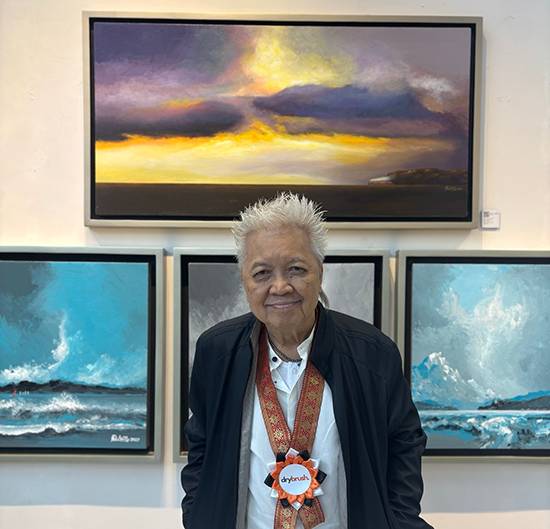
Follow your art
His advice to young, aspiring artists: “When you hear some people say, gutom ‘yan (you will just go hungry), don’t listen to them. Listen to your heart and follow your art.”
Today, Castillo is better known as the Father of Miniature Paintings (keep an eye out for that teeny-tiny lighthouse or train amid his vast landscapes).
Hobbled by age, Castillo confesses that his fingers quiver when he holds his paintbrush, and now, it takes him longer to finish a painting. But he declares, “My fingers may be unsteady, but my spirit remains strong. My soul is still there—it will never die.”
Certainly, their spark will never be extinguished because these Filipino masters have carved their names in our hearts.



